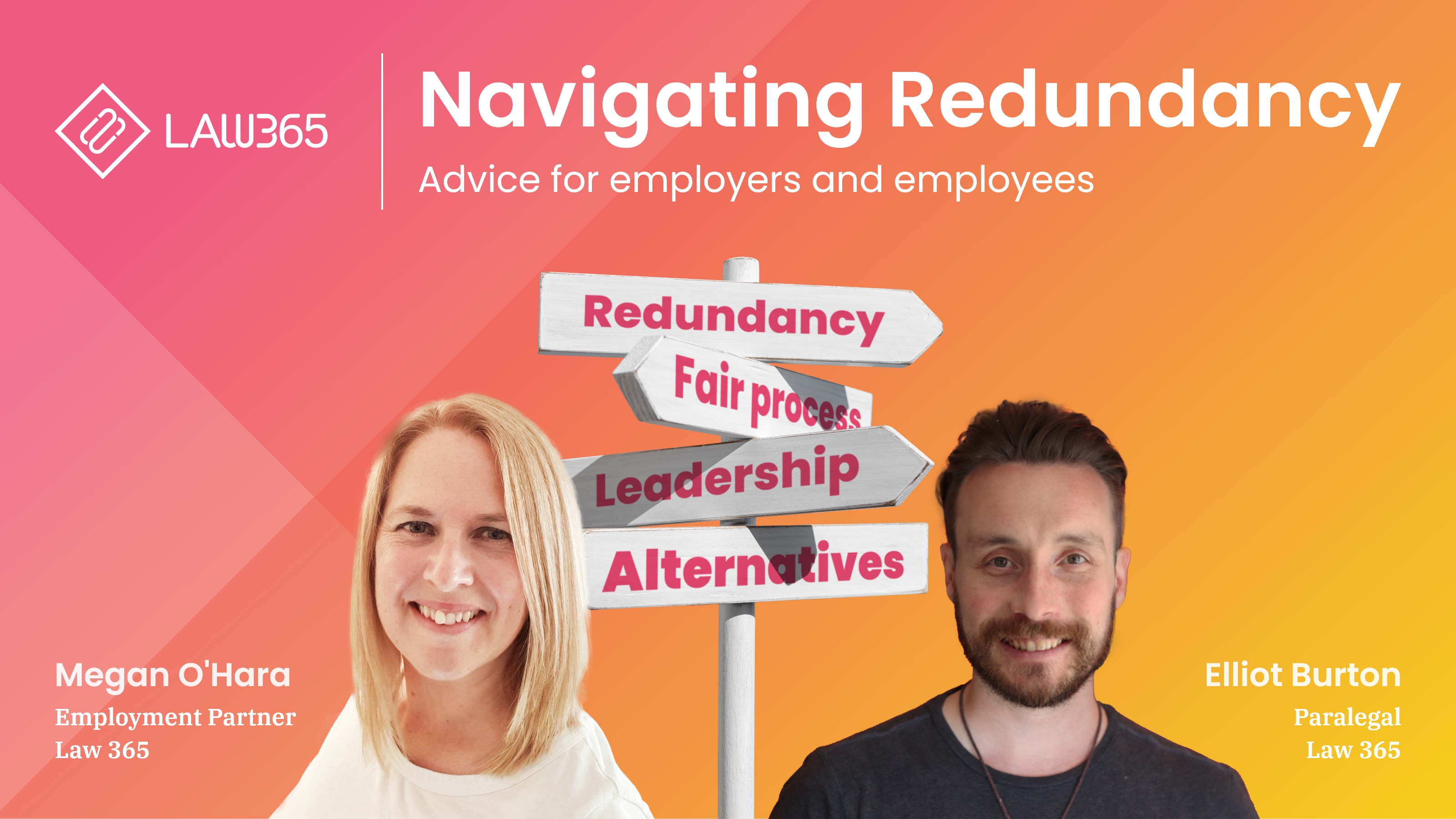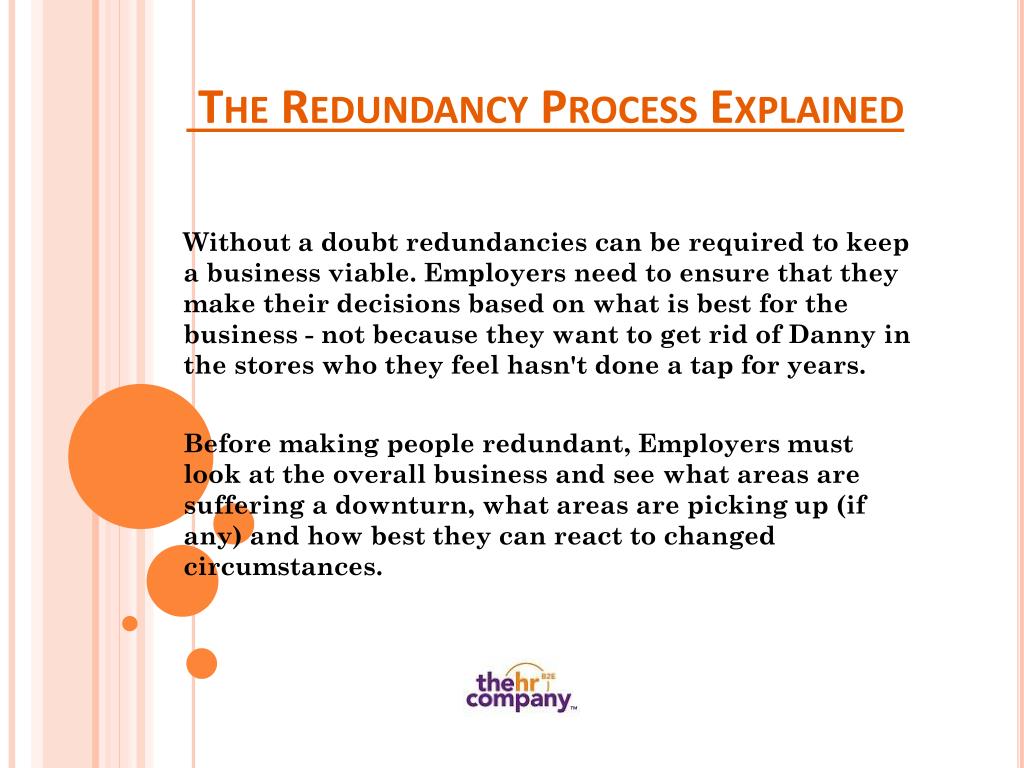Explained: If a Company Goes Bust Who Pays Redundancy in the UK?
Explained: If a Company Goes Bust Who Pays Redundancy in the UK?
Blog Article
Checking Out the Interplay In Between Firm Redundancy and Organizational Flexibility for Future Growth
In the vibrant landscape of today's organization world, the detailed partnership between business redundancy and business adaptability emerges as an essential factor for continual development and success. Companies typically deal with the difficulty of striking a fragile equilibrium in between maintaining a degree of redundancy to minimize threats and cultivating versatility to react quickly to the ever-evolving market needs.
Value of Company Redundancy
Company redundancy is a critical element that boosts organizational strength and minimizes operational dangers. By including redundancy measures within the business structure, companies can better stand up to unforeseen disturbances and variations in business atmosphere. Redundancy serves as a tactical barrier, enabling business to adapt and react efficiently to unforeseen obstacles without compromising essential procedures.
One trick element of the significance of company redundancy is its function in ensuring continuity during times of situation. When encountered with abrupt modifications or emergencies, repetitive systems, resources, or workers can action in to keep important features and avoid widespread interruptions. This connection not only safeguards the company's track record and consumer count on however likewise lessens economic losses and operational downtime.

Strategies for Business Versatility

Developing versatile organizational frameworks that enable for fast adjustments to market characteristics and client requirements is crucial for remaining competitive in a quickly progressing setting. By proactively determining prospective disturbances and possibilities, organizations can proactively adjust and grow in an ever-changing company landscape.
Harmonizing Redundancy and Versatility
Attaining a harmonious balance between functional redundancy and organizational adaptability is paramount in navigating the intricacies of a vibrant business environment. Redundancy within a firm offers a security web, guaranteeing continuity and stability in operations. However, an unwanted of redundancy can bring about ineffectiveness and impede flexibility to altering market problems. On the other hand, organizational versatility permits firms to respond quickly to exterior interruptions and confiscate new possibilities. Striking the ideal equilibrium between redundancy and flexibility is a fragile procedure that needs a deep understanding of the company's objectives, market characteristics, and danger resistance.
To accomplish this equilibrium, firms need to perform routine evaluations of their procedures to recognize locations where redundancy is essential for risk reduction and where versatility can drive technology and growth. Applying flexible structures, cultivating a culture of constant understanding and enhancement, and encouraging open interaction throughout all levels of the company are essential techniques to integrate redundancy and versatility efficiently. By lining up these 2 crucial aspects, business can position themselves for lasting growth and success in an ever-changing organization landscape.
Instance Studies on Adjustment Success
In taking a look at circumstances of successful organizational adjustment, it becomes obvious that the interaction between functional redundancy and adaptability is a specifying consider shaping resilient companies. One compelling case research study is that of Netflix. Initially a DVD rental service, Netflix demonstrated exceptional adaptability by transitioning right into a streaming system when digitalization interfered with the sector. By tactically investing in innovation and web content production, Netflix not just prospered however made it through in a swiftly evolving market. An additional standout instance is Amazon. Starting as an on-line book shop, Amazon constantly adapted its company model, broadening into diverse sectors such as cloud computer and fabricated knowledge. This versatility enabled Amazon to stay in advance of competitors and visit here fulfill altering customer needs. Last but not least, Adobe provides a notable illustration of successful adjustment. The business changed from marketing software application licenses to a subscription-based model, ensuring repeating earnings streams and boosted customer interaction. These study highlight the value of operational redundancy combined with business adaptability in promoting lasting growth and competition.
Structure Durability for Future Growth
Building strength for future development requires a critical placement of operational processes with market dynamics and emerging trends. Business need to adapt to transforming environments by cultivating a society of adaptability, technology, and continuous renovation.
Moreover, fostering strong connections with stakeholders, such as customers, employees, vendors, and the neighborhood, is crucial for preserving and weathering uncertainties count on and support throughout rough times. Reliable interaction and transparency play a vital duty in structure durability, as they aid line up assumptions and facilitate partnership in browsing unpredictabilities.
Additionally, organizations need to prioritize discovering and development efforts to upskill staff members and furnish them with the essential tools to adapt to altering scenarios. By investing in their workforce, business can boost their adaptability and agility, eventually strengthening their durability for lasting future growth.
Conclusion

In the dynamic landscape of today's company world, the elaborate relationship between firm redundancy and business adaptability emerges as a vital element for sustained development and success. Firms usually deal with the challenge of striking a fragile equilibrium in between this post preserving a level of redundancy More Info to alleviate risks and cultivating flexibility to respond promptly to the ever-evolving market needs.To achieve this equilibrium, companies require to conduct routine assessments of their procedures to identify locations where redundancy is essential for threat reduction and where flexibility can drive technology and growth.In final thought, the interaction in between business redundancy and organizational flexibility is important for future development. Structure resilience through a mix of redundancy and versatility will certainly make sure that companies are prepared for the obstacles of the future.
Report this page